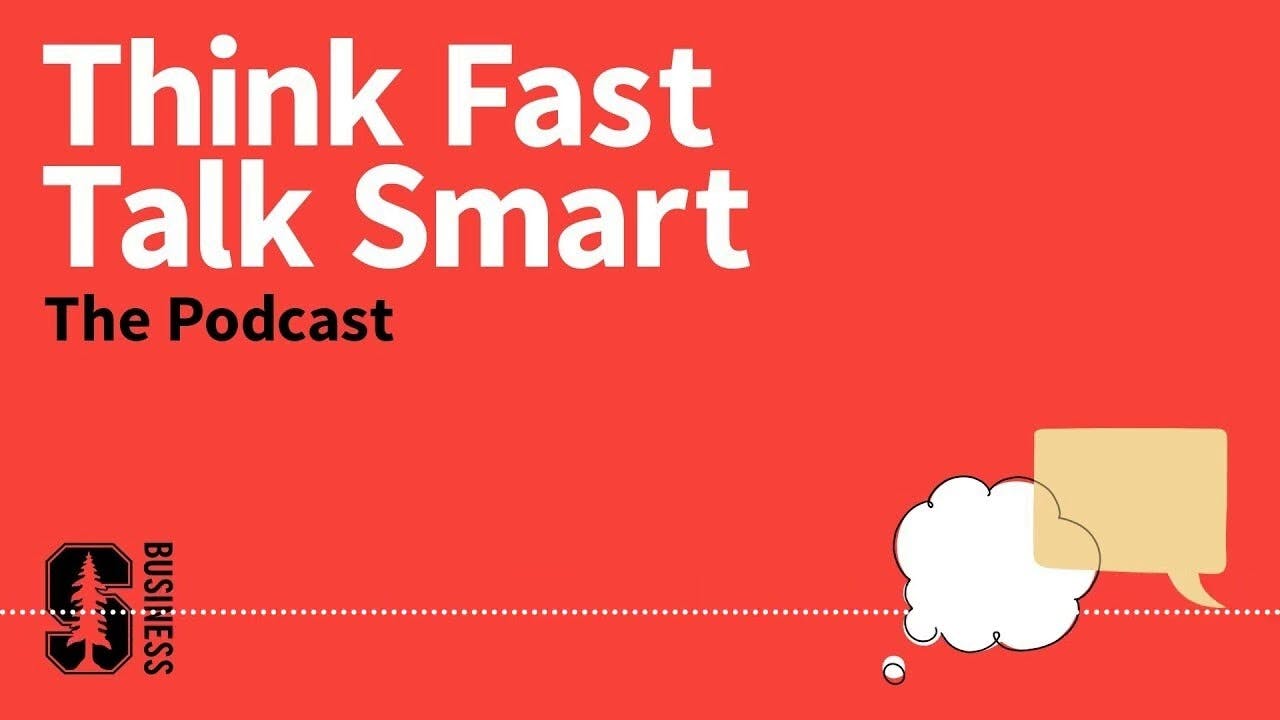141. An Invitation for Innovation: Why Creativity Is Found, Not Forced | Think Fast, Talk Smart:...
()

Introduction (00:00:00)
- The goal is to bring Think Fast Talk Smart to more people globally.
- Please share, rate, follow, and join the Think Fast Talk Smart communities on LinkedIn and Instagram.
- Innovation requires effective communication, collaboration, and conflict resolution.
Leading for Innovation vs. Leading for Change (00:01:10)
- Linda Hill, a professor at Harvard Business School, differentiates between leading for innovation and leading for change.
- Traditional leadership involves creating a vision, communicating it, and inspiring others to fulfill it.
- Exceptional leaders of innovation, however, often don't start with a clear vision but rather foster collaboration, experimentation, and rapid learning among diverse individuals.
- Innovation results from the collective efforts of people with different expertise and perspectives.
Creating a Culture of Innovation (00:02:53)
- Innovation involves collaboration, experimentation, utilizing talents, and embracing challenges.
- A culture of innovation requires a sense of shared purpose and belonging.
- Shared values and rules of engagement are essential for fostering collaboration and innovation.
- Mutual trust, respect, and influence are key to effective interaction within an innovative culture.
- Open communication, providing evidence, and questioning assumptions are crucial for collective problem-solving.
- Holistic thinking considers the impact of innovation on the entire organization.
- Share evidence and admit when it's based on gut feeling.
- Encourage questioning and challenging assumptions, even from junior members.
- Think holistically, considering the impact of innovation on the entire organization.
The Role of Shared Values and Purpose in Innovation (00:06:21)
- Shared values and purpose are essential for fostering a culture of innovation.
- Four shared values that drive innovation:
- Bold ambition: organizations encourage employees to think beyond their current roles and responsibilities and pursue ambitious goals.
- Collaboration: employees work together across functions and geographies to achieve shared goals.
- Learning: organizations encourage a culture of continuous learning and experimentation.
- Responsibility: employees feel accountable for delivering results and contributing to the shared purpose.
- Purpose, or "why we're going there," creates a sense of community and motivates employees to adopt new tools and technologies.
- Effective communication is crucial for establishing a culture of innovation and inviting employees to participate.
- To invite employees to innovate, it's important to understand their "slice of genius" - their talents and passions.
- Connect their talents and passions to the collective good and help them understand how their contributions can make a difference.
- Effective communication is key in inspiring employees and capturing their attention.
Communication's Impact on Innovation (00:09:43)
- Innovation boils down to the ability to align and motivate people behind the "why".
- Storytelling helps leaders inspire people and communicate the purpose and value of their work.
- Collaboration is essential for innovation, but conflict is also important.
- Conflict allows for a diversity of thought and can lead to more creative solutions.
- Creative abrasion: Amplifying differences and allowing for a bit of tussle among talented and passionate individuals can lead to innovative solutions.
- Creative agility: Experimenting and learning together is crucial for innovation, as it allows for a more flexible and adaptive approach.
- Creative resolution: Making decisions without compromising, going along to get along, or letting one group dominate is essential for fostering innovation.
- Patient and inclusive communication: Allowing all voices to be heard and working through conflicts patiently and inclusively is key to successful innovation.
Conflict and Creativity in Collaborative Environments (00:14:30)
- Collaborative and conflictual environments can contribute to creativity.
- It is important to clarify who makes decisions in these environments.
- There are six dilemmas or paradoxes that must be managed for innovation.
- Improvisation and structure are two of these dilemmas.
- Unleashing individual genius requires improvisation, while leveraging collective good requires structure.
- Psychological safety is important for improvisation.
- Structures should be minimal but effective for collaboration, experimentation, and learning.
The Final Three Questions (00:16:06)
- The structures should support collaboration, experimentation, learning, and decision-making.
- Minimal structure enables creativity, while too much structure can lead to confusion.
- Spontaneous communication moments can be used to foster creativity and innovation.
- Diversity of thought is essential for fostering collaborative work.
- Pick collaborators who are younger, strong-willed, talented, and outspoken.
- Seek out different opinions and perspectives.
- Vineet Nayar, former CEO of HCL Technologies, is an admired communicator.
- His strength lies in using simple but vibrant language that paints a picture.
- Provocative: The communication should raise a question and make the audience eager for the answer.
- Know your audience: Tailor the communication to the specific group of people you are addressing.
- Engage both the head and the heart: The communication should appeal to both the logical and emotional sides of the audience.
Conclusion (00:19:54)
- Effective communication combines information with emotional connection.
- Storytelling, curiosity, audience understanding, and balancing information with emotion are key ingredients for successful communication.
- Matt introduces a new English language learning webpage designed to help non-native English speakers communicate more effectively.
- The webpage offers practical advice, Think Fast, Talk Smart episode-specific content, and links to English language learning podcasts.